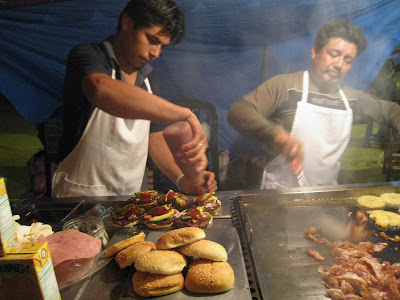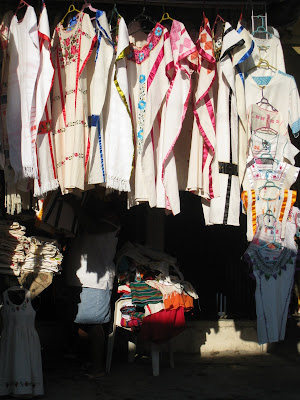

Part of our falling in love with Oaxaca led us to rent a short-term apartment in the centre of Oaxaca a stone's throw from Santo Domingo. Part of our falling in love with our little apartment on Callejon Hidalgo comes from our visits with the neighbourhood street dog - Canela.
Canela is very tired. She spends her late nights and early mornings in the doorway across the street from us. She has a little make shift corrugated metal wall to protect her from the wind. She spends her late morning to early afternoon flaked out in the sun in my doorway or on the street and she spends her late afternoons and evenings around the corner in front of the taco shop. It's a pretty hard life and she needs to sleep a lot.
Although she remains a street dog, she has been adopted by two older ladies in the neighbourhood. One offers her doorway as a safe place to sleep, and the other buys her food, vet visits, and weekly clean t-shirts to keep her warm in Oaxaca. It's a hard life, especially on Christmas and New Year's Eve when the fireworks are continuous. No self-respecting dog can maintain a state of calm in the face of nearby explosions and Canela is no exception. With every inch of her being she feels obliged to chase every single celebratory explosion in every single direction and the next day she pays dearly for it. She can barely walk and must sleep the whole day with no visits to my doorway or the taco stand.























































